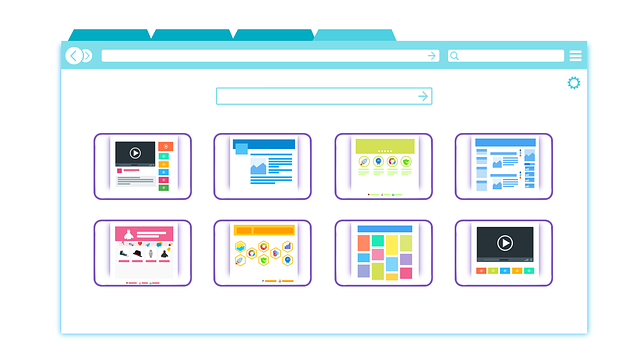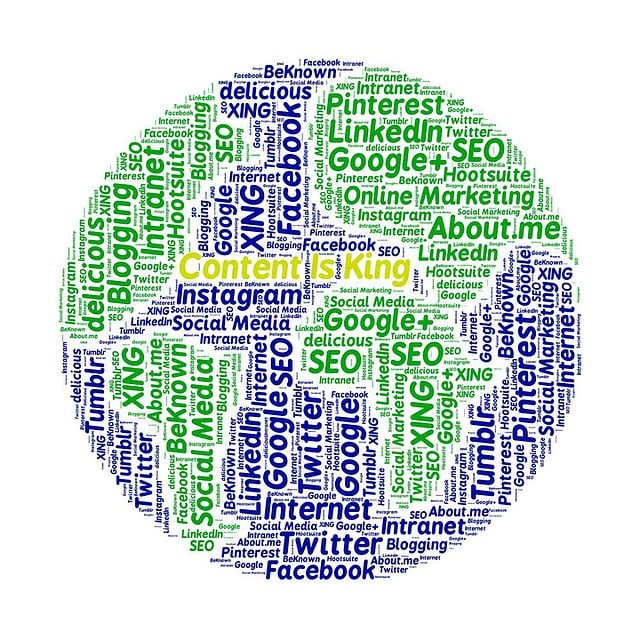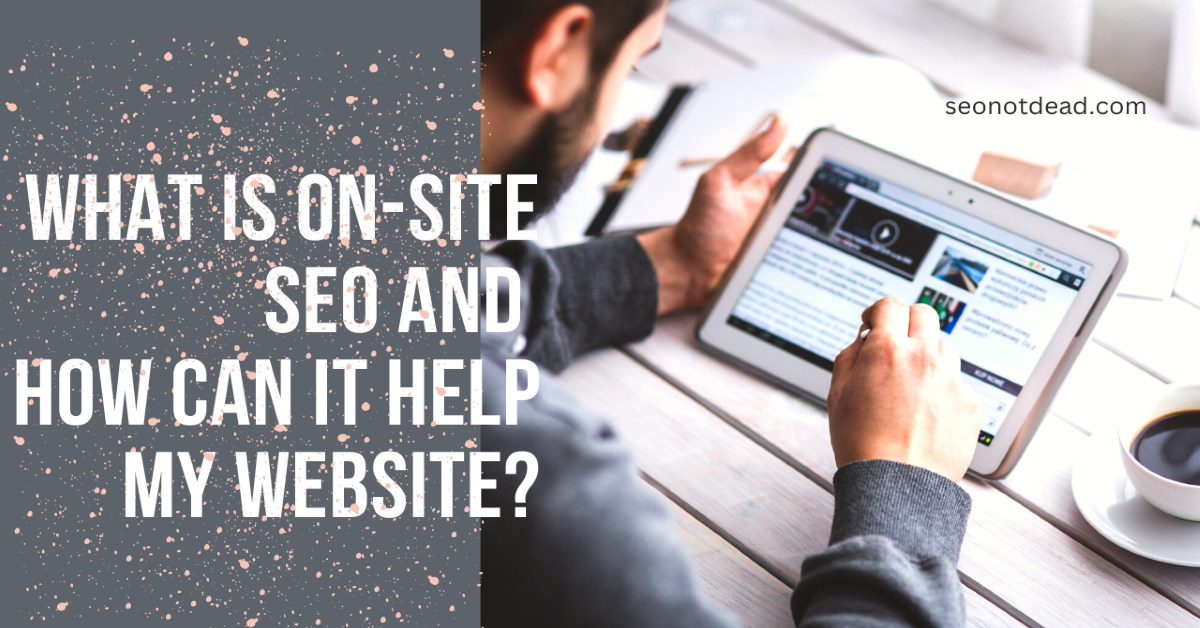There are many factors to consider when optimizing your website for search engines. One crucial factor is on-site SEO, which refers to optimizing your website’s content and structure to improve your visibility in search engine results pages (SERPs).
In this post, we’ll take a look at what on-site SEO is and how you can use it to improve your website’s ranking. Stay tuned for tips on optimizing your website’s title tags, meta descriptions, images, and more!
What on-site SEO is?
On-site SEO is optimizing your website’s content and structure to improve your visibility in search engine results pages (SERPs). You can optimize your website’s title tags, meta descriptions, images, and other elements.
Why is on-site SEO important?
On-site SEO is important because it helps search engines understand what your website is about and how it can be helpful for users. When done correctly, it can help your website rank higher in SERPs, resulting in more traffic and leads.
How to optimize your website for on-site SEO
There are many factors to consider when optimizing your website for on-site SEO. Here are a few tips:
Optimize your website’s title tags. Your title tags should include your target keywords and describe your content.
Meta descriptions are another essential element to optimize. Your meta descriptions should also be descriptive and include your target keywords.
Make sure your images are optimized for SEO. It means using relevant, keyword-rich file names and alt text.
Ensure your website’s structure is easy to navigate. It will help search engines understand your website’s hierarchy and index your pages correctly.
Use keyword-rich content to improve your website’s visibility in SERPs.
By following these tips, you can optimize your website for on-site SEO and improve your chances of ranking higher in SERPs.
Benefits of on-site SEO
There are many benefits of on-site SEO, including:
Improved visibility in SERPs:
When you optimize your website for on-site SEO, you’re making it easier for people searching for information related to your business to find your site. If they find your site, they may click to learn more about your products or services.

More traffic and leads:
Search engines like Google prioritize websites with good on-site SEO over those with poor one. As a result, your site will appear higher in search results than sites without good on-site SEO.
Better user experience:
Users who visit your website will see better navigation if you’ve optimized your website for on-page SEO. They won’t need to scroll down your page to find what they want.
On-site SEO is an integral part of any holistic SEO strategy. Optimizing your website’s content and structure can improve your visibility in search engine results pages and drive more traffic and leads to your website.
Now that you know what it is and how to optimize your website put these tips into practice and see the results for yourself!
Examples of on-site SEO techniques
Here are a few examples which you can use to improve your website’s ranking:
1. Use descriptive title tags:
Your title tag is one of the essential elements of your website’s HTML code. It appears as a snippet of text under each link on your site. The title tag should describe the page so that search engines can identify it quickly. For example, “SEO Guide” would not be an excellent description for a page about SEO. A better description might be “Learn How To Optimize Your Website For Search Engines.”
2. Optimize your meta descriptions:
Your meta descriptions should describe your page briefly and include your target keywords so that search engines can quickly identify your page.
3. Use keyword-rich images:
Ensure your images are optimized for SEO by using relevant, keyword-rich file names and alt text. It will help search engines understand what your images are about and how they can be helpful for users.
4. Ensure your website’s structure is easy to navigate:
Your website’s structure should be easy to navigate so that search engines can easily index your pages. A well-organized website is also more user-friendly, which can help improve your chances of ranking higher in SERPs.
5. Use keyword-rich content:
Your content should be well-written and, throughout, include your target keywords. It will help search engines understand what your website is about and how it can be helpful for users.

6. Implement Schema markup:
Schema markup is a code that helps search engines understand the content on your website. Adding schema markup to your website can improve your chances of appearing in rich snippets, resulting in more traffic and leads.
7. Optimize your website for speed:
Your website’s loading speed is an essential factor in your ranking. Users are more likely to leave a website that takes too long to load, so it’s essential to ensure your website is as fast as possible. You can improve your website’s speed by optimizing your images, using a content delivery network, and minifying your code.
8. Mobile-friendly design:
More and more users are accessing the internet from their mobile devices. It’s essential to make sure your website is designed for mobile so that users can easily view it on their phone or tablet. You can do this by using a responsive design or a mobile-specific design.
Following these tips can improve your website’s ranking and visibility in SERPs.
The importance of keyword research for on-site SEO
Before optimizing your website, you need to do keyword research to find the right keywords to target. Keyword research helps you understand what users are searching for and how to target those keywords to improve your ranking in SERPs.
To do keyword research, you can use tools like Google Keyword Planner and Ubersuggest. These tools will help you find relevant keywords to target. Once you’ve found the right keywords, you can optimize your website for on-site SEO.
What is not considered an on-site or on-page search engine optimization strategy?
There are a few things that are not considered on-site SEO strategies, including:
Link building:
Link building is creating links to your website from other websites. While links are essential for SEO, they are not considered an on-site SEO strategy.
Social media marketing:
Social media is a great way to promote your website, but it is not considered an on-site SEO strategy.
Pay-per-click (PPC) advertising:
Paid advertising, such as Google AdWords, is not considered an on-site SEO strategy.
While these strategies can help improve your website’s ranking, they are not considered on-site SEO techniques. To optimize your website for on-site SEO, focus on the abovementioned techniques.
On-site VS Offsite SEO. Which one do you need?
There are two types of SEO: on-site and off-site. On-site SEO refers to the techniques you use to optimize your website for search engines. It includes optimizing your title tags, meta descriptions, and images. Off-site SEO is the technique you use to improve your website’s ranking through link building and social media marketing.
Both on-site and off-site are essential for any holistic SEO strategy. However, if you’re starting, it’s best to focus on on-site SEO first. Once you’ve optimized your website for it, you can start working on off-site SEO.
The Bottom Line
Although on-site SEO may seem daunting, the benefits are clear. Optimizing your website for search engines can increase your traffic, leads, and sales. And best of all, on-site SEO is something you can control – so get started today! I hope this article has given you some insights into on-site SEO and why it’s essential. If you need help getting started or want to learn more about how to optimize your site for search engines, contact us today. We’re always happy to chat with fellow business owners and help them grow their online presence.
FAQs
Q. What is on-page SEO?
A. On-page SEO refers to the techniques you use to optimize your website for search engines. It includes optimizing your title tags, meta descriptions, and images.
Q. What is off-page SEO?
A. Off-page SEO refers to the techniques you use to improve your website’s ranking through link building and social media marketing.
Q. What three things should you look at when developing your on-page SEO?
A. You should look at three things when developing your on-page SEO: title tags, meta descriptions, and images.
Q. When it comes to on-page SEO, What is king?
A. When it comes to on-page SEO, content is king. Your website’s content should be well-written and relevant to your target keywords.
Q. What is an easy way to optimize your website for on-page SEO?
A. One easy way to optimize your website for on-page SEO is to use a responsive or mobile-specific design. It will ensure that your website is easy to view on all devices.
Q. How many H1s can you have on a page?
A. You should only use one h1 tag on a page for SEO purposes. You should use this tag for your website’s title or logo.
- Google Ads Customer Service Woes: An Urgent Call for Improvement - January 17, 2024
- Microsoft Copilot Levels Up: Introducing Copilot Pro for $20/Month - January 17, 2024
- Understanding SEO Perfection According to Google’s John Mueller - January 2, 2024

